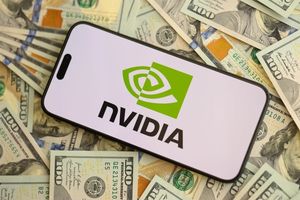
As 2025 draws to a close, the financial markets are witnessing a profound recalibration, marked by a significant investment rotation out of high-flying technology stocks and into more traditional, value-oriented industries. This seismic shift, driven by evolving macroeconomic conditions and a critical reassessment of tech valuations, signals a potential end to the prolonged dominance of growth-centric tech firms, ushering in an era where stability and established profitability are once again paramount. The immediate implications are particularly acute for the Artificial Intelligence (AI) and blockchain sectors, which have long been beneficiaries of speculative capital, now facing a more discerning and cautious investment landscape.
This pivot is not merely a transient market fluctuation but rather a structural reorientation, reflecting a maturing market sentiment that prioritizes tangible assets and consistent earnings over speculative growth projections. The enthusiasm that propelled tech giants and nascent AI startups to unprecedented valuations is giving way to a sober evaluation of fundamentals, prompting investors to seek refuge in sectors historically known for their resilience and predictable returns. This recalibration promises to reshape the competitive dynamics within the tech industry, challenging business models reliant on continuous capital infusion and forcing a renewed focus on efficient growth and demonstrable value.
The Great Reallocation: Unpacking the Capital Shift
The current investment rotation represents a stark departure from the market dynamics that characterized much of the preceding decade. As of early November 2025, tech-heavy indices like the NASDAQ Composite have experienced considerable pressure, with some reports indicating a collective shedding of over $800 billion in market value from AI-focused stocks in a single week. This contrasts sharply with the robust performance of value stocks and traditional sectors such as financial services, energy, industrials, basic materials, and healthcare, which have consistently outperformed growth stocks throughout the year. For instance, the Russell 1000 Value has shown positive year-to-date returns, while international equities have seen substantial gains.
This shift is fundamentally different from previous tech corrections. While past downturns often stemmed from specific industry bubbles or economic recessions, the current rotation appears more deliberate, driven by a confluence of factors including persistent inflation concerns, evolving expectations around Federal Reserve interest rate policies, and a broader reassessment of risk. Investors are increasingly skeptical of the lofty valuations within the tech sector, particularly those tied to the AI boom, which some analysts have begun to label an "AI bubble." The market is moving towards a model of "efficient growth," where companies must demonstrate a clear path to profitability and sustainable business models rather than relying solely on future potential.
Initial reactions from the financial community underscore the gravity of this shift. Market strategists widely anticipate this rotation to continue well into 2026, accompanied by ongoing volatility and rapid changes in market leadership. Analysts are advising increased diversification, emphasizing the importance of spreading investments across various sectors, styles (growth vs. value), and geographical regions. The consensus points to a maturing market that is becoming less tolerant of speculative ventures and more focused on companies with strong fundamentals, stable earnings, and reasonable valuations. This sentiment is compelling tech companies, including those in AI and blockchain, to re-evaluate their strategies and accelerate their path to profitability.
Shifting Tides: AI, Blockchain, and the Corporate Conundrum
The investment rotation is sending ripples through the AI and blockchain ecosystems, forcing a recalibration of strategies for companies of all sizes. For AI startups, the era of easy capital for speculative ventures is waning. Many are now facing a "reality test," with valuations being scrutinized against fundamental profitability. Startups that can strategically reinvent their business models using AI, moving beyond mere productivity gains to create entirely new value propositions, are better positioned to thrive. Those requiring massive funding without immediate profit may struggle to secure new rounds or become attractive acquisition targets for larger, more diversified players.
Tech giants such as Microsoft (NASDAQ: MSFT), Alphabet (NASDAQ: GOOGL), Amazon (NASDAQ: AMZN), and Meta Platforms (NASDAQ: META) continue to pour substantial resources into AI infrastructure. While their diversified revenue streams and deep pockets offer a buffer against market volatility, their massive AI spending is now under intense scrutiny. Investors are increasingly demanding clear evidence that these investments translate into tangible profits and sustainable competitive advantages, rather than simply contributing to an "arms race" for AI capabilities. The "Magnificent Seven" tech stocks, which have enjoyed significant growth, are experiencing pullbacks due to overextended valuations and investor reassessment, compelling them to demonstrate efficient growth and integrated AI-native applications.
The blockchain sector is experiencing a significant pivot in venture capital, with funding increasingly shifting from crypto-specific projects towards AI. This has led to a funding drought for many blockchain startups, particularly those not directly integrating AI. While some innovative firms like Bitfarms (NASDAQ: BITF) are successfully pivoting their mining infrastructure to high-performance computing for AI, traditional crypto entities clinging to obsolete strategies are struggling. Interestingly, the broader altcoin market, especially the AI sub-sector within crypto, has shown resilience, benefiting from a "rotation to innovation" as capital reallocates from Bitcoin (CRYPTO: BTC) to AI-linked altcoins, DePIN (Decentralized Physical Infrastructure Networks), and gaming. However, the strong correlation between AI stocks and crypto also means that a significant correction in the perceived "AI bubble" could trigger substantial market volatility in illiquid altcoin markets.
Traditional industries are emerging as significant beneficiaries of this capital shift. Sectors like financial services, energy, industrials, and healthcare are attracting investment due to their perceived stability, sustainable growth, and often lower valuations. Companies within these sectors that proactively embrace AI to optimize operations, enhance customer experiences, and scale growth—for instance, manufacturers implementing predictive maintenance or financial institutions leveraging AI for fraud detection—are gaining a significant competitive edge. This creates a fascinating dynamic where traditional businesses, by strategically adopting cutting-edge technology, are challenging the market positioning of established tech-native companies that are not agile enough to demonstrate immediate, profitable value. The demand for electricity from AI data centers, for example, is positioning utilities and energy infrastructure as long-term beneficiaries, further highlighting the interconnectedness of these shifts.
Beyond the Hype: Wider Implications for AI and Blockchain's Evolution
This investment rotation is more than just a market correction; it signifies a profound maturation of both the AI and blockchain sectors, compelling them to move beyond speculative hype towards demonstrable value and practical applications. It forces a critical look at the underlying fundamentals, distinguishing between genuine innovation with a clear path to profitability and ventures built on unfulfilled promises. This "Great Rotation" is intrinsically linked to broader macroeconomic shifts, including elevated interest rates and persistent inflation, which invariably make future earnings of growth stocks less appealing compared to the immediate stability of value investments.
The wider impact is multifaceted. There's an increased scrutiny on ROI, with investors demanding clear revenue models and tangible business outcomes from AI and blockchain initiatives. This is particularly crucial given that a significant percentage of enterprise generative AI projects are reportedly failing due to poor data quality, inadequate risk controls, escalating costs, or an unclear business value proposition. This more disciplined approach is fostering a maturation of the industry, shifting from broad experimentation to a focus on practical implementation and specific use cases that deliver measurable value. It could also lead to consolidation, as smaller, less differentiated AI startups struggle for capital, forcing them to either prove their worth or become acquisition targets. A potential silver lining is that a slower pace of development, freed from intense funding pressure, might encourage a more deliberate and ethical approach to AI, fostering accountability and trustworthiness.
However, concerns persist. Warnings about an "AI bubble" drawing parallels to the dot-com era are growing louder, with some AI stock valuations reaching comparable peaks. This raises the specter of a sharp market correction if expectations are not met. For blockchain, historical funding has been more volatile than AI, experiencing sharp declines during crypto market crashes and amidst regulatory uncertainty. While progress in regulatory frameworks is being made, the inherent volatility of assets like Bitcoin (CRYPTO: BTC) remains a challenge for broader institutional adoption. The current environment also highlights potential over-reliance on AI automation and issues related to data quality, accuracy, and inherent biases in AI models.
Comparing this to previous AI milestones or market shifts, the current AI investment surge bears a striking resemblance to the internet boom of the late 1990s, complete with high valuations and a concentration of market capitalization in a few top companies. While the dot-com crash serves as a cautionary tale, some argue that the AI boom, unlike purely financial bubbles, is more of an "industrial" bubble. As Amazon (NASDAQ: AMZN) founder Jeff Bezos once suggested, even if this bubble bursts, society will still benefit from the underlying technological advancements. This disciplined market environment is pushing both AI and blockchain towards greater maturity, a stronger focus on real-world utility, and more sustainable growth models driven by demonstrable value rather than pure speculation, ultimately shaping a more robust and ethically conscious future for both transformative technologies.
The Road Ahead: Navigating AI and Blockchain's Evolving Landscape
The investment rotation, while presenting immediate challenges, is fundamentally reshaping the near-term and long-term trajectories of AI and blockchain, driving them towards more practical, value-driven applications. In the near term (2025-2026), AI will continue its rapid evolution from an experimental technology to a ubiquitous tool. Generative AI advancements, such as more capable chatbots with long-term memory and multimodal inputs (like Google's Gemini), will transform workflows across industries. AI assistants and copilots are becoming standard in software development and various enterprise applications, exemplified by Microsoft's (NASDAQ: MSFT) integration of AI copilots into its Microsoft 365 suite. There's a growing emphasis on domain-specific AI models tailored for particular business problems, rather than solely focusing on Artificial General Intelligence (AGI). Concurrently, AI governance and ethical frameworks are gaining prominence, with regulations like the EU's AI Act and the Colorado AI Act (effective February 2026) emerging to address concerns about data accuracy, bias, privacy, and security, especially for "high-risk" AI systems.
For blockchain in the near term, the focus is shifting from speculative assets to foundational technologies and real-world utility. Decentralized Finance (DeFi) continues to evolve beyond trading, expanding into decentralized lending, borrowing, and insurance. A significant trend is the Real-World Asset (RWA) tokenization, where tangible assets like real estate and commodities are represented as digital tokens on a blockchain, attracting substantial investment. Blockchain as a Service (BaaS) offerings are democratizing access to blockchain technology, while advancements in interoperability and cross-chain solutions aim to simplify asset transfers between different blockchain platforms.
Looking long term (beyond 2025, towards 2030), AI is expected to become profoundly powerful and deeply integrated into daily life. Ubiquitous AI assistants and agents will serve as personal tutors, career counselors, and even therapists, capable of autonomously managing complex tasks. AI will drive significant progress in scientific R&D, from accelerating drug discovery to assisting with formalizing mathematical proofs. The deployment of hundreds of thousands of humanoid robots is predicted, automating vast amounts of physical work. For blockchain, a majority of world trade is expected to leverage the technology, enhancing visibility and efficiency across global supply chains. A cross-border, blockchain-based, self-sovereign identity standard for individuals and assets is anticipated, alongside the rise of "trillion-dollar tokens" that support decentralized ecosystems, potentially replacing traditional corporate structures. Mainstream adoption of digital currencies and DeFi platforms will see blockchain becoming a cornerstone of the financial industry.
The convergence of AI and blockchain promises novel applications. AI can enhance smart contracts, enabling them to respond dynamically to real-time data, while blockchain provides a secure, decentralized framework for managing and verifying the vast amounts of high-quality data crucial for AI systems. This synergy will revolutionize supply chain management, healthcare (secure patient records, early disease detection), and even the functioning of Decentralized Autonomous Organizations (DAOs) by enhancing decision-making and ensuring transparent records.
However, significant challenges persist. For AI, these include ensuring data accuracy, quality, and mitigating bias, addressing the lack of proprietary data and in-house AI expertise, and navigating privacy and security concerns. Integrating AI systems with existing IT infrastructure also presents a hurdle due to high processing power and storage demands. For blockchain, scalability remains a critical issue, alongside the complexity of adoption, high implementation costs, and ongoing regulatory uncertainty. Interoperability between different blockchain networks and the energy consumption of certain consensus mechanisms also need to be addressed.
Experts predict that AI will continue to dominate venture funding, with a strategic shift towards foundational AI technologies and domain-specific applications. Blockchain investments will increasingly focus on real-world utility, including stablecoins and RWAs. The synergy between AI and blockchain will deepen, with blockchain providing secure infrastructure for AI data management and verifiable AI inference. Increased regulatory clarity for both sectors is expected to unlock unprecedented institutional investment, leading to more mature and reliable market structures. Ultimately, both AI and blockchain are poised for mainstream adoption, transforming job markets, and becoming integral parts of daily life and global systems, driven by a renewed focus on demonstrable value and strategic integration.
Conclusion: A New Era of Discerning Investment
The investment rotation out of technology stocks in late 2025 marks a pivotal moment, signaling a maturation of both the AI and blockchain sectors. The era of speculative exuberance is giving way to a more discerning investment climate that prioritizes tangible value, profitability, and robust fundamentals. This "healthy correction" is not merely a setback but a necessary recalibration that will ultimately strengthen the foundations of these transformative technologies.
Key takeaways include the pronounced sell-off in tech-heavy indices, driven by macroeconomic pressures and concerns over inflated valuations, particularly within the AI segment. While AI investment remains robust, it is increasingly concentrated in mega-deals for foundational model companies and infrastructure providers. Blockchain is also maturing, with a growing focus on real-world utility, institutional adoption, and regulatory clarity. The overarching theme is a demand for demonstrable utility and profitability, forcing companies in both sectors to prove their value beyond mere potential.
This period represents a crucial inflection point in AI history. The unprecedented scale of investment in AI infrastructure is laying the groundwork for a new economy, but the simultaneous questioning of valuations ensures a transition from pure speculative enthusiasm to a more fundamental-driven approach. This will likely lead to consolidation within the AI startup landscape, as well as enhanced productivity and economic growth as AI solutions mature and integrate across industries. For blockchain, the long-term impact will be characterized by deeper institutional integration, the explosive growth of real-world asset tokenization, and enterprise adoption that moves beyond cryptocurrency hype.
What to watch for in the coming weeks and months:
- AI Earnings Reports: Upcoming earnings from key AI players like Nvidia (NASDAQ: NVDA) (November 19) and Broadcom (NASDAQ: AVGO) (December 12) will offer critical insights into continued AI-driven demand and revenue translation.
- Central Bank Monetary Policy: Watch for signals from central banks, particularly the US Federal Reserve, regarding interest rate decisions in late 2025 and early 2026. Potential rate cuts could ease financial conditions, influencing investor appetite for growth stocks and riskier assets like crypto.
- AI Funding Landscape: Observe whether the concentration of AI venture capital in mega-rounds continues, or if there's a more diversified investment flow into early-stage and niche AI solutions.
- Blockchain Regulatory Developments: Further legislative clarity for cryptocurrencies and digital assets will significantly impact institutional confidence and investment.
- Real-World Adoption: Track tangible signs of broader enterprise adoption and successful monetization of both AI and blockchain applications across various industries.
- Market Sentiment: Monitor overall market sentiment toward technology stocks to gauge whether the current correction stabilizes or deepens.
The coming period promises to be dynamic, challenging, and ultimately transformative, as AI and blockchain navigate this new era of discerning investment, solidifying their roles as indispensable pillars of the future economy.
This content is intended for informational purposes only and represents analysis of current AI developments.
TokenRing AI delivers enterprise-grade solutions for multi-agent AI workflow orchestration, AI-powered development tools, and seamless remote collaboration platforms.
For more information, visit https://www.tokenring.ai/.





